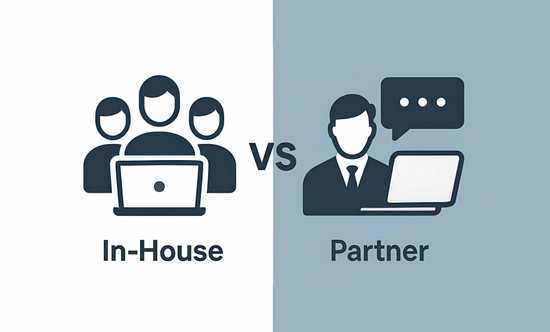How to Build a Healthcare Startup in 2025: Tech Trends and Choosing the Right Development Partner
Introduction
Healthcare is undergoing a digital revolution — and it’s not slowing down. In 2025, the global healthcare software market is growing faster than ever, driven by advancements in AI, evolving patient expectations, and a strong shift toward remote care and interoperable data systems. For aspiring healthtech founders, this means the opportunity is huge — but the execution is everything.
In this guide, we’ll explore:
- Key technology trends shaping the healthcare industry
- A practical, step-by-step process for launching your healthtech product
- Why choosing the right development partner is one of the most critical success factors
Why Healthtech Is Booming in 2025
The global digital health market is projected to exceed $660 billion by 2025 (source). Some forecasts suggest it could reach $1.5 trillion by 2032. This explosive growth is fueled by:
- Post-pandemic normalization of remote care: Telemedicine and asynchronous consultations have become standard.
- AI and data-driven insights: Clinical decisions, diagnostics, and population health management are being reshaped by machine learning and LLMs.
- Patient-centric design expectations: Consumers now demand the same quality of experience from healthcare apps as they get from banking or travel.
- Governmental and regulatory momentum: In markets like the UAE, the EU, and the US, policy changes are incentivizing digital transformation and interoperability.
But what separates a good idea from a breakthrough solution? Founders who understand both the trends and the operational complexity of healthcare — and who partner with the right technical team — have a strategic advantage.
Top Healthcare Technology Trends to Watch in 2025
Today, it’s not enough to follow trends — the most successful healthtech startups are the ones that can anticipate them. Vision alone is not enough: your roadmap should be built on user insights, clinical feedback, and data analysis.
1. AI for Diagnosis and Workflow Automation
AI is transforming how providers diagnose and triage patients. According to BCG, AI is expected to reshape clinical workflows, reduce administrative overhead, and accelerate personalization in treatment. Clinical decision support systems, like those using computer vision or NLP, can reduce time-to-diagnosis and help scale healthcare delivery in regions with limited human resources.
For example, LLM-powered tools can handle symptom checking, chat-based intake, and even generate clinical notes — freeing up providers to focus on higher-level tasks.
2. Remote Monitoring and IoT Integration
Wearables and connected devices have moved beyond fitness tracking. Today, patients with chronic illnesses use real-time glucose monitors, mobile ECGs, and connected blood pressure cuffs that feed directly into provider dashboards.
Startups that build seamless integrations between patient-side devices and provider-side platforms are in high demand — especially those compliant with standards like HL7 and FHIR.
3. EHR Interoperability and Open APIs
Electronic Health Record (EHR) systems are notoriously siloed. Products that solve data fragmentation and improve interoperability can become essential infrastructure.
Building with open APIs, offering real-time sync, and ensuring HL7/FHIR support will make your solution more attractive to hospitals, insurers, and larger platform players.
4. Mental Health and Wellness at Scale
Apps for mindfulness, sleep, therapy, and mental wellness continue to gain users across demographics. A recent New York Post survey reports that over 35% of Americans are already using AI tools to manage aspects of their health, including mental well-being. While some focus on non-clinical support (e.g., journaling, CBT), others bridge into regulated territory with teletherapy and AI-powered interventions.
With rising stress levels, especially in post-pandemic and hybrid-work societies, this segment shows no signs of slowing down.
5. Voice, Chatbots, and Conversational UX
From intake bots to medication reminders, healthcare-specific voice and text interfaces improve accessibility and reduce costs. These solutions can be particularly valuable in low-resource environments or for patients with disabilities.
How to Start a Healthcare Tech Startup: Step-by-Step Guide
Building in healthcare requires a balance of innovation, caution, and deep user empathy. Here’s how to structure your journey:
Step 1: Define a Real, Specific Problem
The most successful founders are solving narrow but painful problems. Rather than building a general-purpose health app, zoom in:
- Scheduling for mental health therapists
- Medication reminders for elderly users
- Remote monitoring for post-surgical recovery
Clarity at this stage shapes everything that follows: design, regulations, marketing, and funding.
Step 2: Validate Early Using MVPs and Design Sprints
Before committing to code, validate your assumptions with real users: patients, clinicians, insurers. Use design sprints and MVPs to prototype fast and gather feedback early.
The faster you invalidate weak assumptions, the more focused your product becomes.
Step 3: Understand the Regulatory Landscape
Healthcare is one of the most regulated industries. Whether you operate in the UAE (MOHAP/DHA), EU (GDPR/MDR), or US (HIPAA/FDA), your compliance strategy should be mapped before development begins.
Startups often make the mistake of treating compliance as an afterthought — only to face blockers at the pilot or funding stage.
Step 4: Build a Scalable, Compliant Architecture
Even your MVP should include:
- Encrypted data handling
- Secure authentication
- Modular architecture for easy iteration
- API integrations with EHRs and devices
Planning for scale doesn’t mean over-engineering — it means designing a system that won’t collapse when adoption grows.
Step 5: Choose a Development Team with Relevant Healthcare Experience
Choosing your development team is arguably the most important decision you’ll make. As highlighted in Datavant’s startup guide, strategic partnerships enable faster go-to-market, regulatory alignment, and access to critical domain expertise.
Look for:
- Proven experience in healthcare or adjacent industries
- Understanding of legal and clinical constraints
- Strong UX and product thinking
- A multidisciplinary team with both engineering and strategic depth
- Real case studies and client references
Don’t hesitate to ask: Have you built something similar before? Who was involved in product design?
Take Inventale, for example — a custom development company that built an AI-based Decision Support System for Psychiatrists from scratch for a private investor. The team not only delivered the tech, but helped shape the product vision, UX logic, and AI components based on domain research. That’s the value of a strategic tech partner.
Step 6: Pilot with Real Stakeholders
Testing your product in a live environment — whether with a clinic, hospital group, or insurer — provides real-world insight no lab test can match.
Engage stakeholders early. Structure your pilot with measurable goals. A pilot executed with real-world constraints can clarify business model feasibility and clinical workflows — a key step highlighted in this healthtech partnership article. Gather both qualitative and quantitative feedback.
And remember: you’re not just validating the product, but the business model, pricing, and stakeholder incentives.
Step 7: Plan for Certification (If Applicable)
If your solution involves diagnosis, monitoring, or direct clinical intervention, you may need CE, MOHAP, or FDA certification.
Plan this from the start — your documentation, testing protocols, and data handling must all align with audit standards.
Common Pitfalls to Avoid
- Skipping stakeholder interviews and building in isolation
- Underestimating compliance, especially for B2B pilots
- Overloading MVPs with features before validating the core
- Partnering with generic dev shops that lack healthcare depth
- Neglecting UX for elderly or non-digital-native users
Final Thoughts: It’s Not Just Tech — It’s Trust
A successful healthcare startup isn’t just a great product — it’s a trusted ecosystem. You’re building for people’s lives, and that requires more than innovation. It takes clarity, humility, data, and the right partners.
Build on truth. Validate with real users. Work with a team that understands the stakes.
📩 Need help validating your idea or choosing a dev team that’s built for healthcare? Let’s talk — we’re happy to support your journey.


